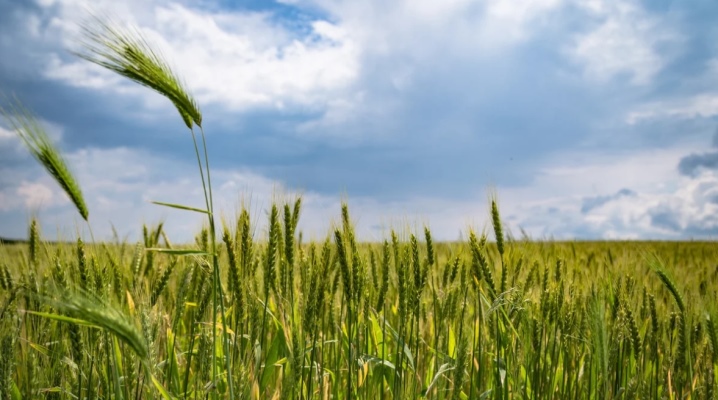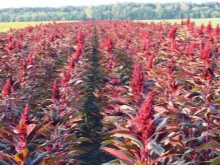Features of cereal siderates

Experienced gardeners know in what sequence the plants should be planted so that the soil after harvesting one becomes favorable for planting the other. Such plants are called siderates. In this article, we will consider the features of cereal green manure, their advantages and disadvantages, as well as the most popular types.


Advantages and disadvantages
All cereals are excellent green manures. They are not planted for harvesting, but to prepare the soil before planting fruit crops.... Thanks to the green manure, the soil is enriched with various nutrients, the land becomes fertile and protected from various infectious diseases.
Siderat is often called also "Green fertilizers" because they perform exactly this function. Today it is known about 400 plants, after which the soil is enriched. The group of cereals deserves special attention, since its representatives are used quite often. These include barley, wheat, amaranth and others. Cereals accumulate many organic components when the green mass grows. They contain a large amount of macro- and microelements, for example, phosphorus, magnesium, nitrogen, calcium, potassium, and so on. Therefore, representatives from the group of cereals are excellent as a nutritious and environmentally friendly fertilizer.
The roots of cereal crops have a positive effect on the structure of the soil, because they form a rather large number of small channels, therefore, water and air permeability is improved.

Let us consider in more detail the advantages of using cereal green manure.
- Formation of humus. Humic substances are formed during the decomposition of plants under the influence of external factors: soil microorganisms, moisture, worms, carbon. Soil fertility directly depends on the amount of green manure. Their presence has a positive effect on photosynthesis, root formation, nutrition and respiration, as well as resistance to various kinds of diseases.
- The soil becomes structured. The presence of green manure contributes to the formation of small canals through which a rather rapid circulation of water occurs, it now gets even into the deep layers, so drought is not terrible for plants.
- The amount of weeds is reduced. Grain green manures have a branched root system, which forms toxic substances that negatively affect weeds. For example, barley helps control wheatgrass.
- The soil becomes decontaminated. Some bacteria and viruses do not tolerate the toxic secretions of cereal green manure.
- The number of pests is reduced. On the site, the number of predatory insects is increasing, which are actively working, destroying aphids, nematodes, and so on.
- Protection of soil from erosion. Usually, the fertile soil layer is washed away by water or destroyed by winds during heavy rains or on a slope. The presence of cereals allows you to preserve this layer, because they have dense roots and dense foliage.
- Increasing the yield, improving its quality. After green manure, garden crops grow well, practically do not get sick and give an excellent harvest. Fruits contain a large amount of sugar, minerals and vitamins, proteins and amino acids.
If we talk about the disadvantages of cereal siderates, then only one should be distinguished - all cereals are afraid of low temperatures. They are usually planted in late summer or early fall.
What crops are they used for?
Grain green manures are suitable for most plants commonly grown by gardeners. After them, nightshade grow splendidly. These include peppers, eggplant, potatoes, tobacco and tomato. You can also plant legumes, among which you must definitely highlight soybeans, beans, beans, peas and asparagus. If you prefer to plant cruciferous plants (horseradish, turnip, cabbage, rutabaga, asparagus), then grain siderates will be just the way.


Species overview
A fairly large number of grain plants can be used as green manure. Let's consider the most famous types in more detail.
- Rye... This plant is usually planted closer to winter. It has many useful properties: it loosens the soil, actively fights against various parasites and diseases, muffles the growth of weeds, increases the amount of nutrients in the soil, and also perfectly protects the soil from freezing. Usually, this green manure is planted if potatoes, cucumbers, pumpkins, tomatoes, zucchini and carrots are to be grown in the spring.
- Oats... This option is also used before wintering. It is perfect for clay soils, as it makes them lighter, and also has a disinfecting effect, therefore it reliably protects against rot. Oats are often planted in front of cucumbers, sometimes even in tandem with vetch.
- Wheat... This variant is also often planted before winter. It prevents the soil from freezing, increases the drainage and aeration of the soil, and also contributes to the structuring of the earth.
- Barley... This green manure has many useful properties, so it is often sown to fertilize the soil. Barley comes in two varieties. Winter crops should be planted in autumn, but spring crops should be planted in spring.
- Amaranth... This cereal plant is not often used as a green manure. It is usually grown for seed or as a vegetable. It should be noted that it is the leaves of amaranth that have a positive effect on soil fertility. Its roots reach two meters, so its cultivation has a good effect on the condition of the soil. But this plant is thermophilic, so it should be planted in late spring or summer.



Sowing rules
If the sowing of grain siderates is carried out in the fall, then you must first harvest the crop. The site will need to be thoroughly prepared: remove all debris and weeds, and also loosen the soil. You can sow seeds at random (scattering in a free order) or neatly form rows. To make a uniform planting, many gardeners use the seeds along with sand or sawdust. When planting is complete, the area should be watered abundantly.
To increase the sideration effect, you must adhere to the following recommendations:
- slight rolling after planting the seeds will accelerate the growth process;
- it is necessary to use loose and moist soil for sowing;
- it is better to protect the planting from birds, because they can peck seeds when they are planted;
- no need to apply related cultures, since they have common weaknesses, it is better to combine different cultures;
It is advisable to adhere to the standards when sowing green manure so that it does not turn out very densely.

When to clean up?
In the spring, you can start harvesting grain siderates. It should be noted that the greens should be soft and tender before mowing, then quite quickly it will completely rot. After mowing, the whole soil is dug up. This should be done about a couple of weeks before planting the fruit crop. This time is enough for the green manure to rot, and the soil becomes soft, fluffy and full of nutrients. To speed up the decay process, strong watering is ideal.
For cereal siderates, see the video.













The comment was sent successfully.